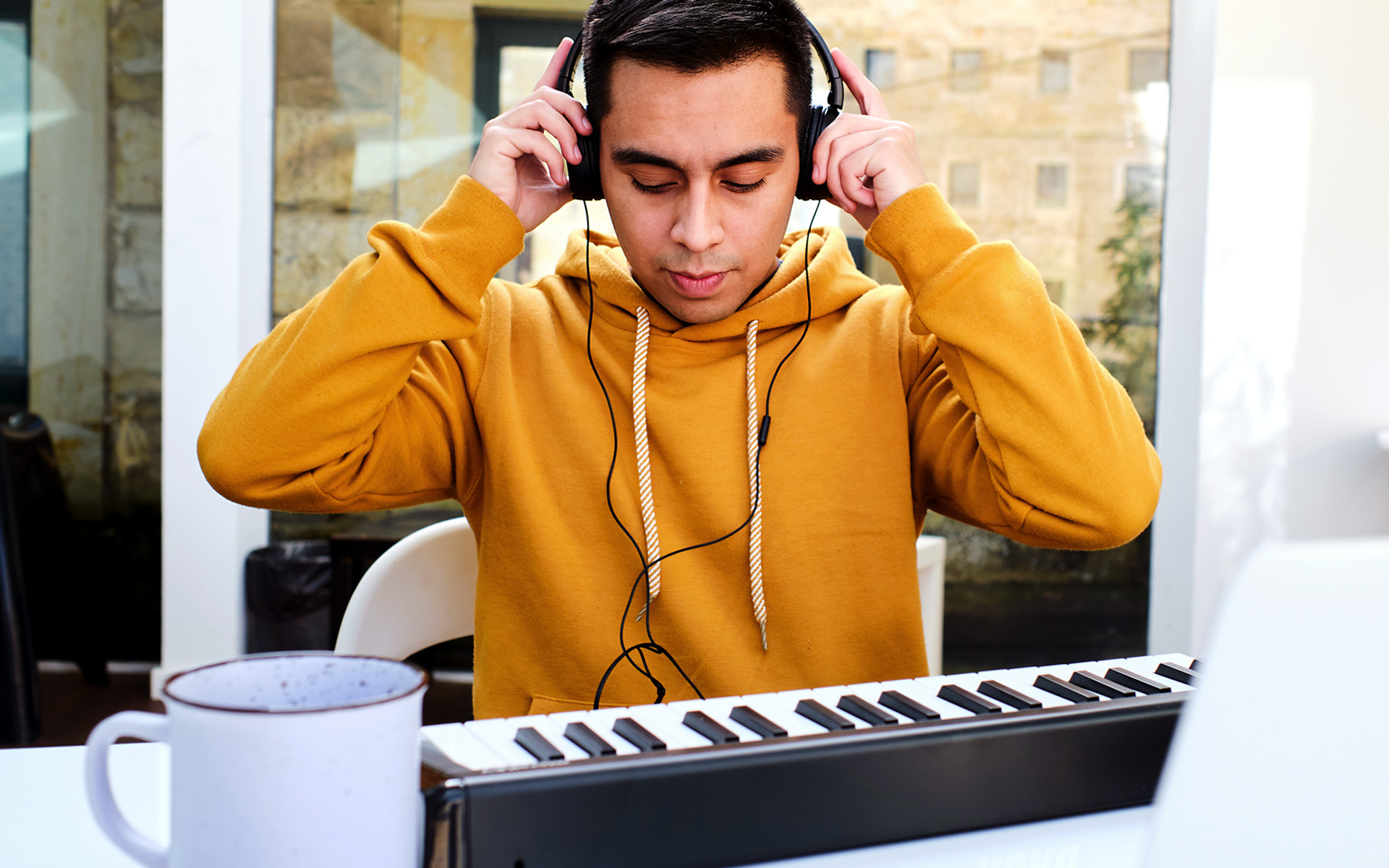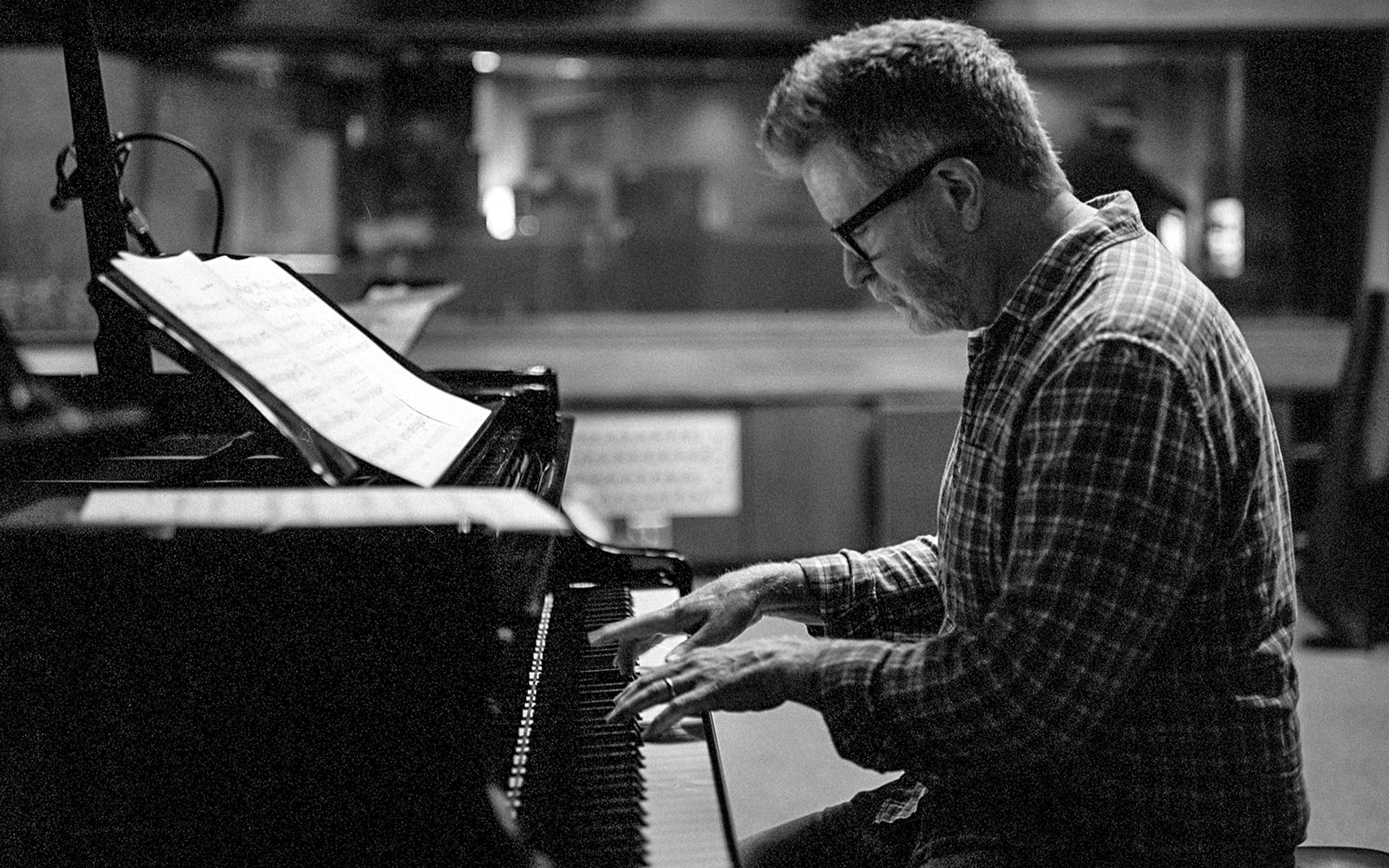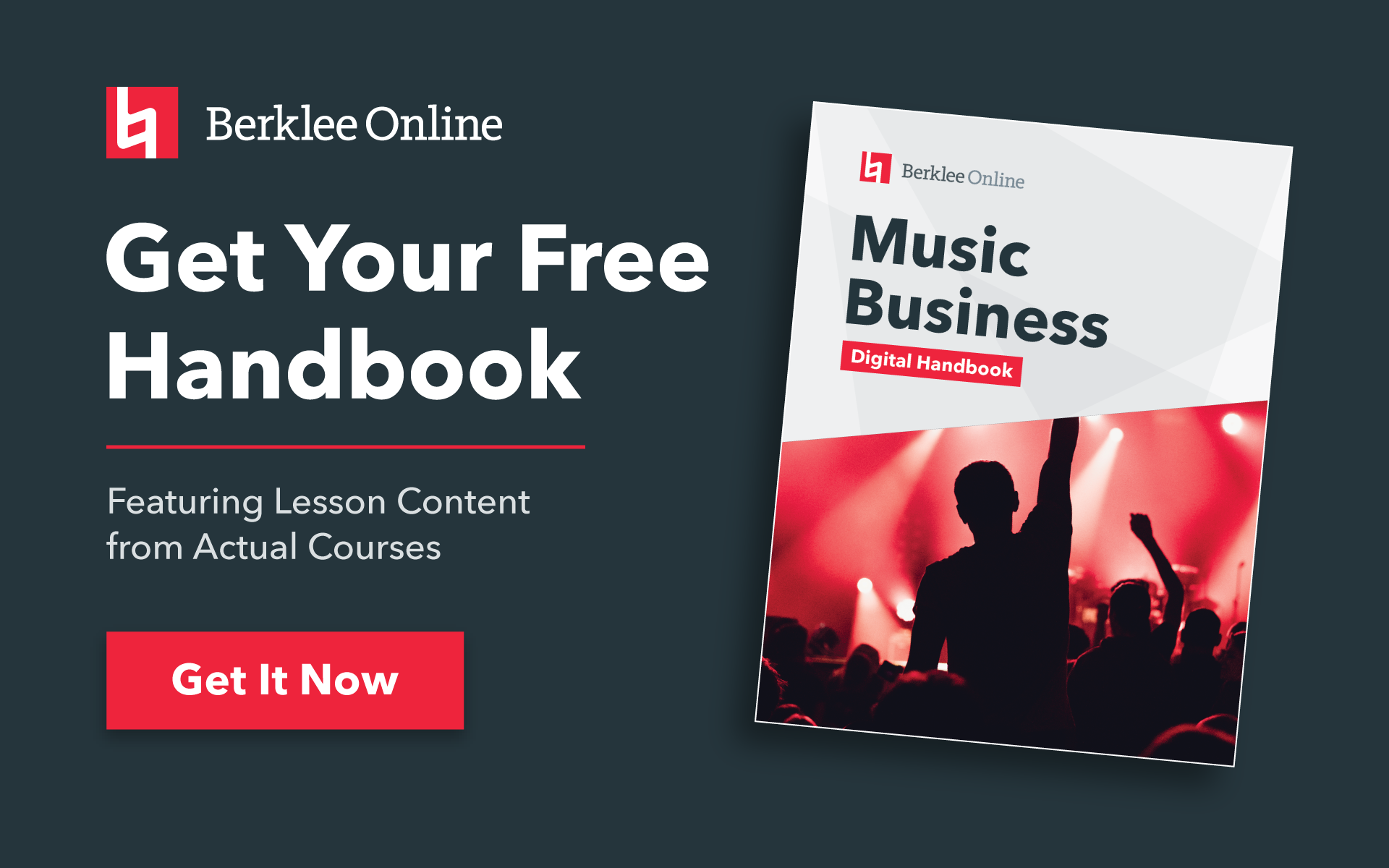The following information on making a music website is excerpted from the Berklee Online course Music Business Trends and Strategies, written by Mike King, and currently enrolling.
Creating a website is absolutely essential to the success of a musician’s online marketing efforts for one reason: control. Websites allow artists to share their music and shape their messaging exactly how they want. Before the shift in control from labels to artists, it was up to third parties to get the word out about an artist. Now musicians can reach their potential audience directly with their website and control nearly every aspect of the content they deliver. Here you’ll learn how to create a musician website, including the components that make a website effective.
First, if you haven’t done so already, you’ll need to choose a website host. Here are some suggested platforms that can be geared towards musicians:
Once your site is up and running, don’t be fooled into thinking that a slick looking site is all that you need to get folks to make your website a regular destination. Design is certainly important to the overall feel of a musician website, but what’s more important is how the site fares from a user experience standpoint. It makes little sense to spend time and money driving potential consumers to a website that does not offer compelling reasons for them to stay (and return later).
LEARN MUSIC BUSINESS WITH BERKLEE ONLINE
Usability
Broadly speaking, web usability refers to the ease at which end users can maneuver through and absorb information on a website. First and foremost, a musician website must be functional. It must have a clear purpose and it must be easy for users to navigate. Here’s a quick list of usability considerations as you learn how to create a website:
Clear Purpose
Make the purpose of your site as clear as possible. Your band’s logo or name should be at the top, in a font that is consistent with how the name is presented on your albums or other merch you make. You want people to know that this is the band’s official website, not a fan-created site. The main purpose is to get people to know your music, become a fan, and hopefully share your music.
Easy Navigation
Make the navigation as clear as possible. Some musicians design their site with pop-up navigation and cleverly hidden links. This may look cool, but folks who are finding out about you for the first time are not going to want to take the time to figure out how to operate your site.
Interaction
Make it as easy as possible for your fans to interact with you. Allow folks to access information, sign up for your newsletter, post on your blog, or buy your merch with the fewest number of clicks possible.
Short Text
Don’t be text-heavy on the site. People don’t read online; they skim. Keep your descriptive copy short. New users spend 30 seconds generally on your homepage. Encapsulate what you do in as few words as possible.
Fast Load Speed
Don’t use large graphics that take a long time to load. By the time the graphic has finished loading, your user will be gone.
Simple URL
Don’t use a complicated URL. If a fan searches for your band name, ideally your website has that exact URL.
No Autoplay
Don’t force people to watch a video or listen to music when they show up on the site. Give them the option to click and watch a video or listen to music but don’t have it play automatically.
Content
Now that you’ve learned how to create a website, now it’s time to learn about its upkeep. Regularly posted content is the most effective way to get folks to revisit your site on a consistent basis. Outdated news is a sure sign that nothing is happening with your band, which is the last thing you want your fans to think. Here are a couple of easy ways to keep your website fresh.
Volume and Frequency
Regular updates are a good idea from a user perspective. But more important, the search engines favor sites that are constantly changing because it proves your site is relevant and active. An active site appears higher in a list of Google or other search engine results.
Visuals
Post the most interesting visual content you have. Images are an exercise in branding, and if you consider yourself a serious band, you need your images to represent that.
Professionally Written Content
Don’t distract site visitors with bad grammar and misspellings.
Blog
Blogging is a great way to add current content, keep your fans up to date, and involve them in the progression of your music career.
External Content
There’s no shame in editorializing content created by someone else. There is no shortage of major music-related news floating around these days. If there happens to be a lull in your band’s activity, post some thoughts on a current music event that affects your band, or some comments on the state of the industry.
Effective Use of Media
The most effective way to turn someone onto your music is not by telling them about it. It’s by having them listen to it. Here are some effective uses of media:
Offer Full Tracks
Give your potential fans an easy way to sample full-length streams of your music. New fans will want a quick way to get a sense of your music. By streaming tracks on your own site (as well as giving your music away as a targeted download), you have a better chance of acquiring their email address for follow-up marketing. Plus, providing a download as a shareable widget helps fans to bring new fans to your site.
Include Videos
Video combines audio and visuals to create a great user experience and will keep users on your site longer.
Live Video
Live streaming video events can later be archived on your site, and/or posted to your own YouTube channel. It’s a great way to bring fans into the recording process, showcase an intimate live event, have a chat with your fans, and more.
SEO
SEO or (search engine optimization) is a term used to describe activities related to the goal of having your site appear high in the search phrase return in Google and other search engines. There are both paid and free (or organic) ways to do this. It’s a true art, and people that can do this well are in high demand.
Now that you’ve learned how to create a musician website, and your content is in order, and you’re confident that you’re providing your fans and users with reasons to come back to your site, the next step is to get SEO happening so people can find you online through a simple search. It’s important to understand, however, that SEO only improves your odds for a high search return; it does not make any guarantees for heavy traffic to your site.
Use Keywords
Ensure your site has indexable content relevant to keywords. Keywords are the phrases and/or words that users type into search engines. The words that you use to describe your music, band, or label are very important to your search engine rankings. Your copy has to be effective in conveying your message to those who are already aware of your site, but you also have to be thinking about what the potential fans who you want to visit your site are typing into the search engines.
Link Out
It might seem counterintuitive to provide links to other websites, but the more active, involved, and connected your site is with others, the higher your rankings will be with the search engines. Consider a page on your site dedicated to similar bands, labels you like, the distributor you work with, and so on. Request a link in exchange, or better yet, create amazing content that folks will want to link to organically. Doing so will raise your visibility with the search engines, as mutual linking will show that you are a “trusted source.”
STUDY MUSIC BUSINESS AT BERKLEE ONLINE









